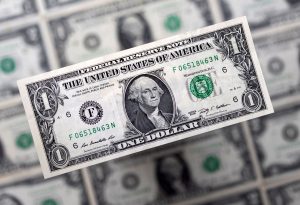The volumes have been quite dry as the US market was closed yesterday, on account of Martin Luther King Jr. day
The dollar index (DXY) opened on a weaker sideline on Monday, January 16, touching its seven-month low. This fresh selling of the dollar is blamed upon the expectation of a softer hawkish stance by the Federal Reserve, which will slow down the pace of rate hikes. The volumes have been quite dry as the US market was closed yesterday, on account of Martin Luther King Jr. day.
The US dollar retraced in the early European market on Monday. The dollar index (DXY), which is the combination of the Euro (EUR) – 57.6%, Japanese Yen – (JPY) 13.6%, Pound Sterling (GBP) – 11.9%, Canadian Dollar (CAD) – 9.1%, Swedish krona (SEK) – 4.2%, Swiss franc (CHF) – 3.6%, at 8:00 GMT moved upwards to 101.987, marginally higher than it’s seven months low of early June. Last week’s wage growth signaled the easing of inflationary havoc and US CPI data also showed inflation slowing for the first time in two and a half years in December 2022.
US Services Sector
According to the US Census Bureau, the US Services Sector comprising the major economic sectors, the Primary, Secondary and Tertiary Sectors, contracted to the levels of 2009 in December. The logical reasoning behind this contraction is the current spending pattern of consumers in a highly inflated market scenario. In times of rising costs of everything from food to fuel, no sound-minded citizen will be spending money on things that don’t come on the necessities list.
The services sector majorly was hit because people don’t want to spend money on services, the purchase of a new refrigerator can be delayed, and manicures and pedicures can be delayed, hence spending in the secondary and tertiary sectors took the severe bullets. This confirmed the expectations of slower but smaller hikes by the Fed, their intentions had been made very clear in earlier statements by Jerome Powell, Fed’s chairman that the only concern they have right now is to lower the inflation in the US, ignoring every repercussion in the pathway. Still, the smaller hikes will keep the US treasury bond yields lower.

The Dollar-Yen pair inched higher
Traders shifted towards the Japanese Yen, pushing the USD/JPY pair higher, in speculation that the BoJ will be altering its yield control policy again in its meeting.
USD/JPY was up 0.1%, sitting at 128 and the primary focus is on the meeting of the BoJ on its policy setting. Talks of BoJ changing its yield control policy besides its decision of announcing the Monetary policy, the upcoming Wednesday. These suspected changes in yield control would be the successor of the utterly shocking announcement last month, which loosened the price band of the 10-year Japanese Government Bonds target.
Japan is also in the clutches of inflation after decades of stagflation, with the rate of inflation climbing up to 4% which was last seen in the year 1982. This newfound skyrocketing price for the current generation is making BoJ uncomfortable, which could lead to further quantitative easing of monetary policies.
The Fed’s smaller hikes, combined with the expectations of the BoJ’s quantitative tightening in the upcoming meeting will also give a bullish stance to the USD/JPY pair.
Dollar peer currencies
The Dollar Euro pair (USD/EUR) rose to a nine-month high of 1.0874. The Pound Dollar pair (GBP/USD) was near 1.2224. The US Dollar and Chinese Yuan pair (USD/CNY) increased 0.1% to 6.7090. While the Australian Dollar and US Dollar pair (AUD/USD) fell 0.1% to 0.6968.